- Home
- Alison Weir
Richard III and the Princes in the Tower Page 25
Richard III and the Princes in the Tower Read online
Page 25
Nevertheless he was acutely aware of the insecurity of his position and conscious of the fact that there were two potential focuses for rebellion: the former Queen and her daughters in sanctuary and Henry Tudor in Brittany. Of the two, Henry Tudor was the more dangerous, for the rebellion had greatly strengthened his position as the Lancastrian pretender to the throne and his presence in Brittany was acting as a magnet to all those who were dissatisfied with Richard III, a steadily increasing number. Already Henry had established a court in exile, and it seemed certain that one day he would make another bid for the crown, perhaps with the aid of a European power hostile to Richard.
This was exactly what Henry Tudor intended. To establish his position clearly in the eyes of his supporters and the world at large, on Christmas Day, 1483, as Richard III was keeping the festival of the Nativity with great solemnity and splendour at Westminster, Henry made a solemn vow in Rennes Cathedral that as soon as he should be king he would marry Elizabeth of York. Afterwards his supporters, many of them prominent Yorkists, swore to be loyal to each other before kneeling to Henry and paying him homage as though he had been already crowned king. They then swore they would one day return to England and overthrow the tyrant Richard. This ceremony was intended to inspire others to join Henry’s cause and to bring over to his side those Yorkists who were loyal to the line of Edward IV, thus uniting them with the Lancastrian faction.
It was a masterful move, but it would not, and could not, have happened if Henry and his supporters had not by then been certain that the Princes in the Tower were in truth dead.
16
An Especial Good Lord
BY JANUARY, 1484, it was widely believed, not only in England but in France also, that Richard III had murdered his nephews. The new French king, Charles VIII, was a minor, as Edward V had been, and his elder sister, Anne de Beaujeu, had been appointed Regent. However, certain French nobles were reluctant to accept her as such and on 15th January the Estates General met at Tours for the purpose of bringing them to heel. On that day Guillaume de Rochefort, Chancellor of France, a grave and learned man not given to flights of fancy, addressed the assembly, and these nobles in particular, warning them of the perils of a minority, reminding them of what had happened in England:
Look, I pray you, at the events that have taken place in that country since the death of King Edward. Think of his children, already big and strong, murdered with impunity and the crown transferred to their murderer by the will of the people.
Rochefort was obviously reminding the French government of what they already knew, and his statements may have been based not only on the gossip then infiltrating the court of Europe but also on high-level intelligence that has not survived. It is also possible that he had spoken with Mancini, who is known to have been his friend. Mancini had stayed at Beaugency in December 1483 when Rochefort had been nearby on the King’s business. It is likely that the two men met and that Mancini passed on what information he had about the Princes; the subject was highly topical just then on account of the rumours seeping in from England. However, when Mancini wrote his account of Richard III’s usurpation that December he referred only to rumours current in London before mid July 1483. Rochefort must therefore have had something more to go on, but it is notable that he assumed that the murder had taken place before Richard’s accession. There is no doubt that he spoke with conviction, not only because he believed he was speaking the truth, but also because he welcomed the opportunity to vilify Richard III, who had been unpopular in France since he had advocated the revival of England’s dynastic claims to that kingdom.
In England, on 23rd January, 1484, the only Parliament of Richard III’s reign met at Westminster and passed the Act of Settlement known as ‘Titulus Regius’, formally confirming the King’s title to the crown. Its purpose was to remove ‘all doubts and seditious language’ and to quieten men’s minds, but many were strongly critical of its legality. Croyland, a canon lawyer himself, wrote: ‘Although that lay court found itself unable to give a definition of his rights, since matrimonial law was at issue, this body of laymen was not qualified to pronounce on the matter; nevertheless, even the stoutest were so swayed by fear that Parliament presumed to do so, took that power upon itself, and did so pronounce.’ The difficulty was that Parliament had no jurisdiction to determine the validity of Edward IV’s marriage: only an ecclesiastical court could do that. But the members were cowed into overturning all legal precedent for fear of the King’s vengeance. After the Act was passed, Edward, Prince of Wales was recognised by Parliament as heir to the throne.
The legislation passed by Richard III’s Parliament was seen retrospectively as wise and beneficial. In 1525 Cardinal Wolsey was informed by the Lord Mayor of London that ‘although the King did evil, yet in his time were many good Acts made’. Francis Bacon called Richard ‘a good law maker’ who legislated ‘for the ease and solace of the common people’. However, it is not known how far Richard was personally responsible for these laws, which provided for the first legal-aid system in England, bail for offenders, the reform of oppressive land-tenure laws, the regulation of qualifications for jury service, and the abolition of livery and maintenance practices and of the hated ‘benevolences’, the system whereby wealthy men were forced to make financial gifts to the Crown. This last was a very popular measure, enacted in response to public opinion and Richard III may well have intended it to be a placatory measure to keep the magnates in check and boost public support and his own popularity. But the people who benefited most from the majority of the new laws were the lower orders of society and this left the magnates, on whom Richard depended, disgruntled and dissatisfied, and the King no more popular than he had been before.
Richard III was an energetic and efficient ruler with many qualities of leadership. In 1484 he proclaimed to the men of Kent that he was ‘utterly determined that all his true subjects shall live in rest and quiet and peaceably enjoy their lands, according to the laws of this, his land’. Rous, writing in Richard’s reign, called him ‘an especial good lord. He ruled his subjects in his realm full commendably.’ Other commentators also praised his abilities as a sovereign. He was hard-working and generally lenient. Because of his preoccupation – or obsession – with security, he was forced to employ conciliatory policies and to make constant bids for popularity, doubtless hoping that in time he might overcome the prejudices of his subjects. But it was already too late for this. Public feeling was against him, fuelled by the promotion of northerners and the dark rumours about the Princes. Men imputed a cynical motive to whatever he did, and late in 1484 he became even more unpopular when, short of money, he was obliged to extort forced loans from his wealthier subjects, which were equivalent to the benevolences he himself had declared illegal. Croyland thought this scandalous because the King had ‘openly condemned’ such practices in Parliament. Now he was being ‘careful to avoid any use of the word benevolence’. ‘Oh, God,’ lamented Croyland, seizing the opportunity to enlarge upon Richard’s shortcomings, ‘why should we any longer dwell on this subject, multiplying our recital of things so distasteful and so pernicious in their example that we ought not so much as to suggest them? So, too, with other things which are not written in this book, and of which I grieve to speak.’ Was Croyland, that most discreet of chroniclers, referring here to the Princes?
Elizabeth Wydville, meanwhile, remained in sanctuary with her daughters. The failure of Buckingham’s rebellion had extinguished her hopes of a return to power, and the punishment of her allies had left her isolated and demoralised. She had now been confined for nine months and must have found her life tedious in the extreme. Even so, she undoubtedly regarded sanctuary as a place of safety and showed no sign of leaving it. This caused embarrassment to the King, who was doing his best to convince his people that his rule was benevolent and conciliatory. He was also aware that many of his subjects regarded Elizabeth of York as the rightful Queen of England, and he was consequently determined to obtain custody of
her. Besides, if she was at court he could arrange a suitable marriage for her and thus put her beyond the reach of Henry Tudor. Elizabeth Wydville’s refusal to leave sanctuary was a constant thorn in Richard’s side, and early in 1484 he made up his mind to do something about it. However, his cause was prejudiced from the first because not only had Parliament just enacted a Statute confiscating Elizabeth Wydville’s property, leaving her penniless, but also, says Vergil, because the ‘grave men’ sent by the King to persuade the former Queen to leave Westminster Abbey with her daughters upset her by referring to the death of her sons, which amounted to official confirmation that they were dead.
Croyland states that Richard’s emissaries used ‘frequent entreaties and threats’ and ‘strongly solicited’ Elizabeth Wydville to comply with the King’s wishes, while Rous says she was ‘harassed by repeated intercessions and dire threats’. It soon became alarmingly clear that the Sanctuary could no longer be regarded as a place of refuge, since Richard would obviously not hesitate to use force to remove her and her daughters if she resisted him. This was the main reason why, in the end, the Queen agreed to compromise by sending her daughters ‘from the Sanctuary at Westminster to King Richard’, but only, says Vergil, after being promised ‘mountains’ by him after she had shown signs of weakening. In striking such a bargain she showed herself to be both a realist and a pragmatist.
The revisionists constantly argue that Elizabeth Wydville would never have agreed to transfer her daughters into the care and control of the man who had murdered her sons. But this is exactly what she did do, knowing that he had not only done away with the Princes but had also murdered another of her sons, Sir Richard Grey, who had been executed without justification or a proper trial. The fact of the matter was that in view of Richard’s threats, Elizabeth had no choice but to surrender her daughters: had she not agreed to do so, force would have been used to make her. While the King was still hoping for an amicable conclusion to the impasse, she seized her advantage and drove a hard bargain, knowing that Richard was anxious to maintain his public image: she insisted that he swear a solemn public oath to protect and care for her daughters. Elizabeth was well aware of the value that her contemporaries placed on such oaths, and that the publicity generated by one would serve as protection for the young girls when they left her care.
Richard agreed to take an oath, and he also offered Elizabeth a generous pension of 700 marks, which she accepted. Agreement was reached on all these matters by the end of February, and on 1st March the King summoned to Westminster his magnates and princes of the Church, as well as the Lord Mayor and chief citizens of London, and in their presence placed his hand on sacred relics of the Four Evangelists and swore the following oath:
I, Richard, by the Grace of God King of England etc., in the presence of my lords spiritual and temporal, promise and swear on the word of a king that if the daughters of Dame Elizabeth Grey, late calling herself Queen of England, will come to me out of the Sanctuary at Westminster, and be guided, ruled and demeaned after me, then I shall see that they be in surety of their lives, and also not suffer any manner hurt by any manner person, nor any of them imprison within the Tower of London or any other prison, but that I shall put them in honest places of good name and fame, and them honestly and courteously shall see to be entreated and to have all things requisite and necessary as my kinswomen, and every one of them give in marriage to gentlemen born. And such gentlemen as shall hap to marry with them I shall straitly charge, from time to time, lovingly to love and entreat them as their wives and my kinswomen, as they will avoid and eschew my displeasure.
This oath was undoubtedly based on stipulations made by Elizabeth Wydville, and it proves that she was very suspicious indeed of Richard’s motives. The reference to the Tower is significant: without mentioning what had happened to the Princes there, Richard undertook that the same fate should not befall their sisters. It was a comprehensive oath covering all contingencies, and the fact that Richard agreed to swear it in public is an indication of how anxious he was to bring Edward IV’s daughters under his control and be seen to have reached an understanding with their mother. To some extent the oath had a beneficial effect on the King’s public image: even today, as we have seen, there are those who will not believe that Elizabeth Wydville would have relinquished her daughters to the murderer of her sons. However, one cannot escape the thought that had she not believed Richard to be guilty of that deed there would have been no occasion for such an oath.
The King had also told Elizabeth that he would pardon her son Dorset if he returned to his allegiance, abandoned Henry Tudor and came home to England. Elizabeth wrote to Dorset, urging him to do just that and promising him that Richard would ‘treat him well’. She also ordered him to break off negotiations for the marriage between Elizabeth of York and Henry Tudor. Dorset secretly left the Pretender’s court but was intercepted by Henry’s spies and warned not to go back to England. He complied, but for a long time afterwards Henry Tudor would not trust him.
The daughters of Edward IV left the Sanctuary in early March. There is probably no factual basis for the statement in The Song of the Lady Bessy that Elizabeth, the eldest, went to live in Lord Stanley’s London house: Margaret Beaufort was there, and it is hardly likely that the King would have countenanced his niece fraternising with the woman who had tried to marry her to Henry Tudor. It is much more likely that the girls all went initially to court and accompanied the King and Queen to Nottingham in April, returning to London at the end of July. There is confusion over what happened to Elizabeth Wydville. Clearly she did not leave sanctuary with her daughters, for the King authorised payment of her pension via John Nesfield, the man he had placed in charge of security at the Abbey and whose duty it was ‘to attend upon the former Queen’. But by the summer of 1484 Nesfield was serving as a naval captain, fighting the French, and we may assume that Elizabeth Wydville had at last emerged from sanctuary.
Where she went is a mystery. Possibly she was given an apartment at court, but this is unlikely given the bad feeling between herself and the King. Croyland says that at Christmas 1484 she sent her daughters to court, implying that they were then living with her away from it, having probably been sent by the King to her after she left sanctuary and they returned from the Midlands. We do not know where this was: Elizabeth’s properties had been confiscated, so the King must have provided them with accommodation.
In April, Richard III, gratified that he had achieved his objective, went with the Queen and the court to Nottingham Castle. Here, says Croyland, ‘it was fully seen how vain are the thoughts of a man who desires to establish his interests without the aid of God’. For the Prince of Wales, ‘this only son of his, in whom all the hopes of the royal succession, fortified by so many oaths, were centred, was seized with an illness of but short duration’. Dr Saxon Barton suggested in the 1930s that this could have been appendicitis because the Prince, he alleged, suffered violent stomach pains, though no contemporary source for this evidence is quoted. Whatever the illness, the child, aged only seven or eight, met what Rous calls ‘an unhappy death’ on 9th April, 1484, one year to the day after the death of Edward IV. He died at Middleham Castle and was probably buried in Sheriff Hutton Church, where a tomb bearing a much-damaged alabaster effigy of a little boy, beneath a window containing fragments of fifteenth-century glass showing the Yorkist Sun in Splendour emblem, may mark his final resting place.
Croyland says that when the news reached Nottingham on 20th April, ‘you might have seen his father and mother in a state almost bordering upon madness by reason of their sudden grief’. Not only had they lost their only child, but Richard had also lost his heir, and this left his realm vulnerable to a disputed succession in the event of his early death. It also undermined his own position and prompted some nobles to reflect upon whether the hand of God was evident in this latest circumstance, a consideration which led some of their number to transfer their loyalty to Henry Tudor.
On a persona
l level Richard was devastated by his son’s death. For ever after he would refer to Nottingham as his ‘Castle of Care’, and it may be that his personal prayer dedicated to St Julian was composed for him at this time. He may also have seen the death of his son as a judgement on him for murdering the Princes, a predictable reaction in those superstitious times: nothing else could have brought home to him more forcibly the extent of his guilt, a cross he had to bear alone. It has even been claimed by some modern writers that Richard was a little deranged after his son died, though there is no evidence to substantiate this.
We cannot, of course, be certain that Richard himself saw the loss of his child as a divine punishment; nevertheless, that is how the majority of his subjects viewed it. More says that when they heard of Prince Edward’s death, ‘Englishmen declared that the imprecations of the agonised mother [Elizabeth Wydville] had been heard’. And naturally the event provoked a fresh crop of rumours about the Princes in the Tower. These rumours may also have been the consequence of the emergence from sanctuary of Edward IV’s daughters, and some of them certainly filtered into England from the court of exiles surrounding Henry Tudor in Brittany.
The Great Chronicle of London states that ‘all the winter season the land was in good quiet, but after Easter much whispering was among the people that the King had put the children of King Edward to death, of whom as then men feared not openly to say that they were rid out of this world, but of their death’s manner was many opinions, for some said they were murdered between two feather beds, some said they were drowned in Malmsey, and some said they were sticked with a venomous potion. But howsoever they were put to death, certain it was before that day they were departed this world, of which cruel deed Sir James Tyrell was reported to be the doer. But others put that weight upon an old servant of King Richard’s named …’ Here there is a blank space in the manuscript. In the margin the chronicler has written two headings: ‘Innocents’ and ‘Death of the Innocents’.

 Richard III and the Princes in the Tower
Richard III and the Princes in the Tower Britain's Royal Families: The Complete Genealogy
Britain's Royal Families: The Complete Genealogy The Lady in the Tower: The Fall of Anne Boleyn
The Lady in the Tower: The Fall of Anne Boleyn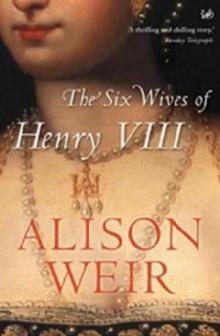 Six Wives of Henry VIII
Six Wives of Henry VIII Elizabeth of York: A Tudor Queen and Her World
Elizabeth of York: A Tudor Queen and Her World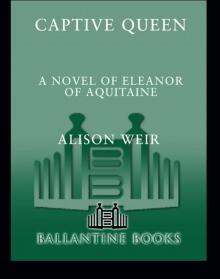 Captive Queen
Captive Queen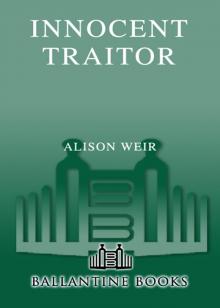 Innocent Traitor
Innocent Traitor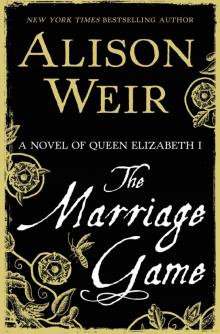 The Marriage Game
The Marriage Game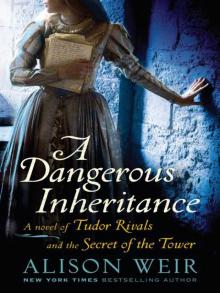 A Dangerous Inheritance
A Dangerous Inheritance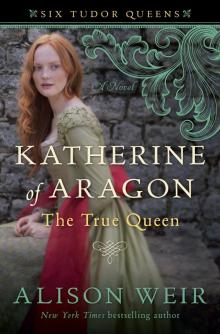 Katherine of Aragón: The True Queen
Katherine of Aragón: The True Queen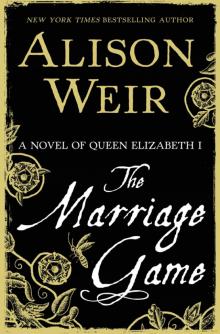 The Marriage Game: A Novel of Queen Elizabeth I
The Marriage Game: A Novel of Queen Elizabeth I Princes in the Tower
Princes in the Tower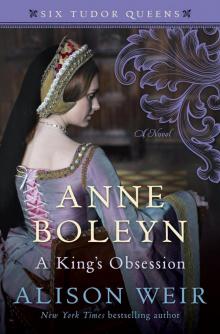 Anne Boleyn: A King's Obsession
Anne Boleyn: A King's Obsession Traitors of the Tower
Traitors of the Tower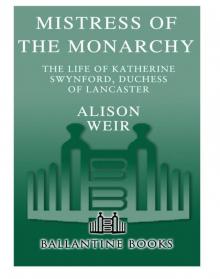 Mistress of the Monarchy: The Life of Katherine Swynford, Duchess of Lancaster
Mistress of the Monarchy: The Life of Katherine Swynford, Duchess of Lancaster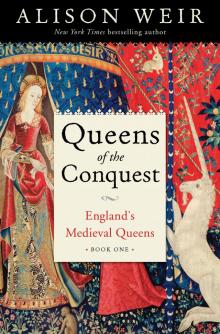 Queens of the Conquest: England’s Medieval Queens
Queens of the Conquest: England’s Medieval Queens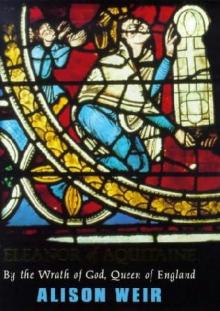 Eleanor of Aquitaine: A Life
Eleanor of Aquitaine: A Life Mary, Queen of Scots, and the Murder of Lord Darnley
Mary, Queen of Scots, and the Murder of Lord Darnley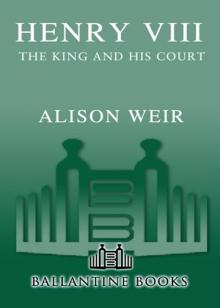 Henry VIII: The King and His Court
Henry VIII: The King and His Court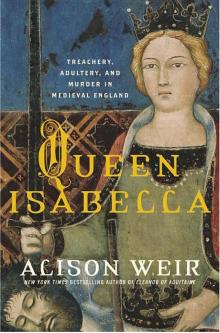 Queen Isabella: Treachery, Adultery, and Murder in Medieval England
Queen Isabella: Treachery, Adultery, and Murder in Medieval England Katheryn Howard, the Scandalous Queen
Katheryn Howard, the Scandalous Queen Arthur- Prince of the Roses
Arthur- Prince of the Roses The Wars of the Roses
The Wars of the Roses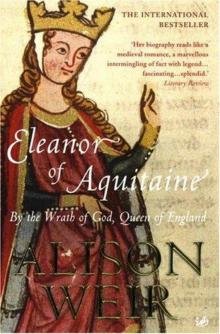 Eleanor of Aquitaine: By the Wrath of God, Queen of England
Eleanor of Aquitaine: By the Wrath of God, Queen of England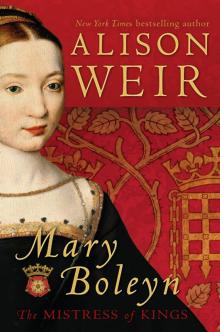 Mary Boleyn: The Great and Infamous Whore
Mary Boleyn: The Great and Infamous Whore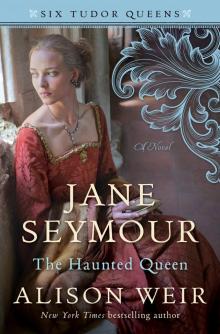 Jane Seymour: The Haunted Queen
Jane Seymour: The Haunted Queen Anna of Kleve, the Princess in the Portrait
Anna of Kleve, the Princess in the Portrait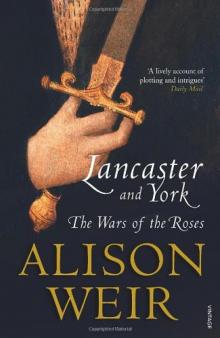 Lancaster and York: The Wars of the Roses
Lancaster and York: The Wars of the Roses The Grandmother's Tale
The Grandmother's Tale The Princess of Scotland (Six Tudor Queens #5.5)
The Princess of Scotland (Six Tudor Queens #5.5)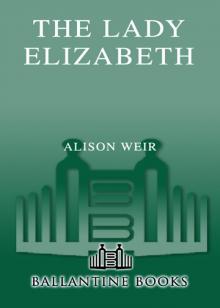 The Lady Elizabeth
The Lady Elizabeth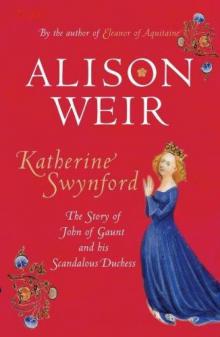 Katherine Swynford: The Story of John of Gaunt and His Scandalous Duchess
Katherine Swynford: The Story of John of Gaunt and His Scandalous Duchess The Curse of the Hungerfords
The Curse of the Hungerfords The Lost Tudor Princess: The Life of Lady Margaret Douglas
The Lost Tudor Princess: The Life of Lady Margaret Douglas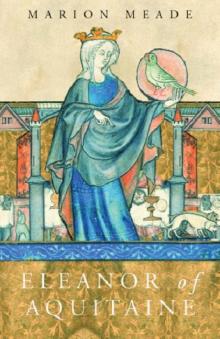 Eleanor of Aquitaine
Eleanor of Aquitaine Mistress of the Monarchy
Mistress of the Monarchy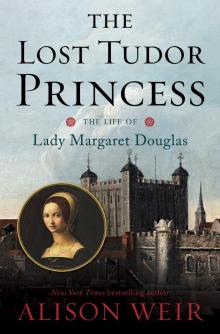 The Lost Tudor Princess
The Lost Tudor Princess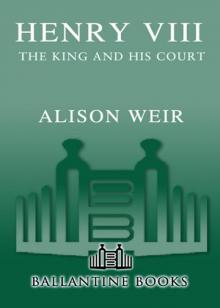 Henry VIII
Henry VIII Anne Boleyn, a King's Obsession
Anne Boleyn, a King's Obsession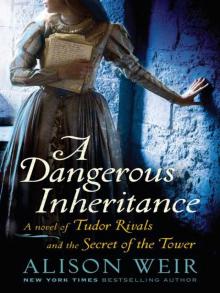 A Dangerous Inheritance: A Novel of Tudor Rivals and the Secret of the Tower
A Dangerous Inheritance: A Novel of Tudor Rivals and the Secret of the Tower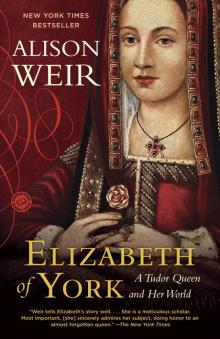 Elizabeth of York
Elizabeth of York Katherine of Aragon, the True Queen
Katherine of Aragon, the True Queen Katherine Swynford
Katherine Swynford Wars of the Roses
Wars of the Roses Queens of the Conquest
Queens of the Conquest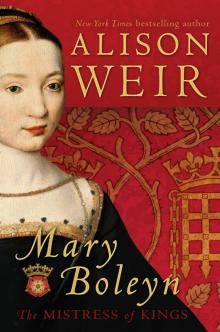 Mary Boleyn
Mary Boleyn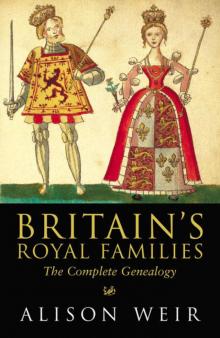 Britain's Royal Families
Britain's Royal Families The Tower Is Full of Ghosts Today
The Tower Is Full of Ghosts Today Life of Elizabeth I
Life of Elizabeth I Anne Boleyn A King's Obssession
Anne Boleyn A King's Obssession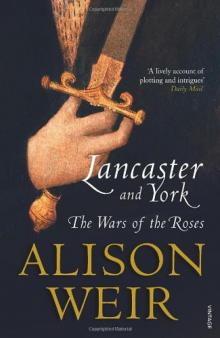 Lancaster and York
Lancaster and York Jane Seymour, the Haunted Queen
Jane Seymour, the Haunted Queen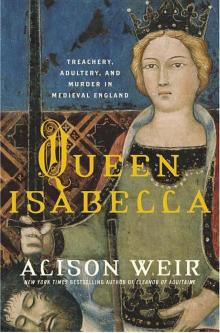 Queen Isabella
Queen Isabella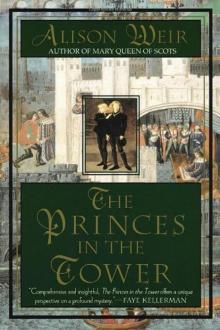 The princes in the tower
The princes in the tower